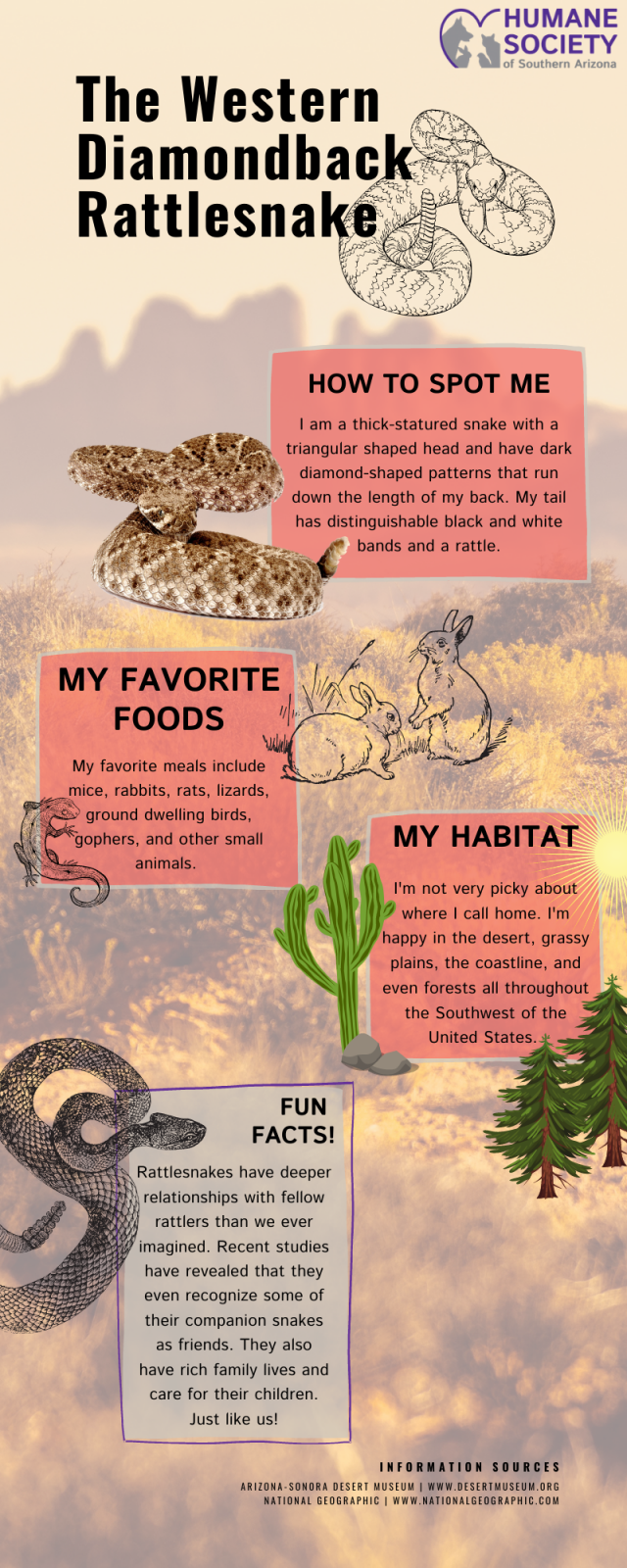Respect the Rattle
Thursday, April 15th, 2021
Snakes. The very word alone can send some people into an instant panic. A reaction that humans seemingly have exhibited since the dawn of our existence. Why is that? Well, you see, humans and snakes have coevolved for quite a significant length of time, nearly 40 to 60 millions years to be exact, and it is likely that our early ancestors had unpleasant interactions with snakes that created an evolutionary change in our reaction to these animals. As we’ve evolved, the threat of snakes has subsided substantially, however, our threat to them has increased insurmountably. It’s important to understand how our relationship with snakes began, so we can better overcome this fear, and more importantly, combat the misconceptions surrounding snakes that are costing them their lives. Read on to learn more about the training we offer to keep your pet and your family safe from rattlesnakes!
Our own backyard is home to one of the most identifiable snakes in the Western United States, the Western Diamondback Rattlesnake. A heavy-statured reptile known for its triangular-shaped head and the beautiful diamond-shaped patterns that cascade down its back, the Western Diamondback Rattlesnake has quite a reputation in these parts, but the last thing we should be of these unique creatures is afraid. So, how can we help stop this? Well, Steve Irwin said it best when he said, “If we can teach people about wildlife, they will be touched. Share my wildlife with me. Because humans want to save things that they love.”
Let’s share and learn about our wildlife! The Western Diamondback Rattlesnake can be found in a variety of different environments from the sandy, dry desert to the more humid and lush hillsides of the coast throughout the Southwestern United States and Northern half of Mexico. One fun fact about these reptiles is that they have an adaptation called a heat sensing pit, allowing them to sense variances in temperature, that is so accurate it can detect variances as minute as a fraction of a degree of difference. How cool is that!? Although, probably the most intriguing fact about rattlesnakes is that they are more like us than we think. A recent study revealed that they actually have friends. Just like you and me! In an article for National Geographic, Founder of Advocates for Snake Preservation and herpetologist, Melissa Amarello expanded on that notion stating that, “they’re shy, gentle creatures with rich family lives. They can have friends. They take care of their kids.” It’s fun to discover that our wild neighbors aren’t so different from us after all, don’t you think?
So, how is the Humane Society of Southern Arizona doing its part? Well, we offer Rattlesnake Avoidance Training throughout the spring to the fall that helps to protect your dog and your family from rattlesnakes. In these classes, piloted by local animal experts from Arizona Animal Experts, Inc. and Adobe Dog Training, your dog will learn how to recognize the presence of a rattlesnake, avoid it, and warn you in time to prevent an expensive and potentially deadly encounter. Minimizing our encounters with rattlesnakes saves their lives and ours. Learn more here!
Snakes are vital to the balance of the ecosystem here. We must respect them and their right to exist. We don’t expect everyone to fall in love with these reptiles, but, we hope that what you take away from this is a newfound respect for these complex creatures and that you think twice about taking their life the next time you encounter one. Remember, this was their land first.
Information Sources
National Geographic | www.nationalgeographic.com
Arizona Sonora Desert Museum | www.desertmuseum.org

